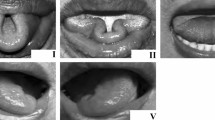Abstract
The α-ASTREE e-Tongue instrument uses seven sensors to characterize taste signals associated with a liquid sample. The instrument was used to study eight test preparations (comprised of a blank, four preparations corresponding to four known tastes and Sodium Topiramate in three concentrations known to have a bitter taste) and eight washes. Serially balanced residual effects designs were used to order the samples to estimate residual and main effects. The design provided for eight repeated measurements per test preparation. The experimental results suggested the following: (1) The seven sensors can be separated into three groups according to the ability to discriminate test preparations, and three of the sensors contributed little or no information. Further investigation suggested the lack of differentiability might be due to the age of the sensors. (2) The sensors discriminated known tastes from blank. The residual effect due to test preparations might appear after repeated usage. (3) Exploratory principal component analysis of the data indicated that nearly 90% of the total variability across the seven sensors could be explained by a single principal component. (4) The four standard taste preparations did not correspond to orthogonal dimensions in the principal component axes. (5) The three Sodium Topiramate test preparations could neither be associated with the corresponding known bitter taste sample nor could the three doses be shown to follow a quantitative dose-response relationship on the e-Tongue measurement scale. The practical interpretation of the results of the statistical analysis indicates only poor discriminative ability of the e-Tongue to distinguish clearly between increasing concentrations of a known bitter compound such as Sodium Topiramate. No apparent linear relationship could be discerned over increasing concentrations that would allow the quantification of bitterness.







Similar content being viewed by others
REFERENCES
Murray OJ, Dang W, Bergstrom D. Using an electronic tongue to optimize taste-masking in a lyophilized orally disintegrating tablet formulation. Pharm Tech. 2004;28:42–52.
Gacula Jr MC, Singh J, Bi J, Altan S. Statistical methods in good and consumer research. 2nd ed. Burlington: Academic; 2009. p. 25–74.
Malisa M, Breimer M, Sadik OA. Electronic-noses and sensory array-based systems: design and application. Proceedings of the 5th international symposium on olfaction and the electronic-nose. Lancaster: Technomic Publ. Co; 1999. p. 27–42.
Electronic nose and tongue, Alpha M.O.S. Newsl. 2004.
Miyanaga Y, Inoue N, Ohnishi A, Fujisawa E, Yamaguchi M, Uchida T. Quantitative prediction of the bitterness suppression of elemental diets by various flavors using a taste sensor. Pharm Res. 2003;20(12):1932–8.
Zhu L, Seburg RA, Tsai E, Puech S, Mifsud J. Flavor analysis in a pharmaceutical oral solution formulation using an electronic-nose. J Pharm Biomed Anal. 2003;34(3):453–61.
Uchida T, Tanigake A, Miyanaga Y, Matsuyama K, Kunitomo M, Kobayashi Y, et al. Evaluation of the bitterness of antibiotics using a taste sensor. J Pharm Pharmacol. 2003;55(11):1479–85.
Isz, S., Poling, J., The e-tongue in the pharmaceutical industry: a fast and objective method for taste masking and the selection of best tasting formulations. AAPS Show Daily. 2003.
Vlasov Y, Legin A, Rudnitskaya A. Electronic tongues and their analytical application. Anal Bioanal Chem. 2002;373(3):136–46.
Zhu, L., Seburg. R.A., Thompson, K., Tsai, E., Isz, S., Feasibility study of an electronic-tongue for potential pharmaceutical applications. Present Am Chem Soc (ACS) Annu Meet. 2004.
Altan S, Manola A, Pandey R, Troisis J, Ragahavarao D. A statistical design consideration in robotic systems. Drug Inf J. 2004;38(3):283–7.
Altan S, Ragahavarao D. Serially balanced designs for two sets of treatments. J Biopharm Stat. 2005;15(2):279–82.
Jones B, Kenward MG. Design and analysis of cross-over trials. London: Chapman and Hall; 1989.
Author information
Authors and Affiliations
Corresponding author
Rights and permissions
About this article
Cite this article
Altan, S., Francois, M., Inghelbrecht, S. et al. An Application of Serially Balanced Designs for the Study of Known Taste Samples with the α-ASTREE Electronic Tongue. AAPS PharmSciTech 15, 1439–1446 (2014). https://doi.org/10.1208/s12249-014-0173-0
Received:
Accepted:
Published:
Issue Date:
DOI: https://doi.org/10.1208/s12249-014-0173-0



